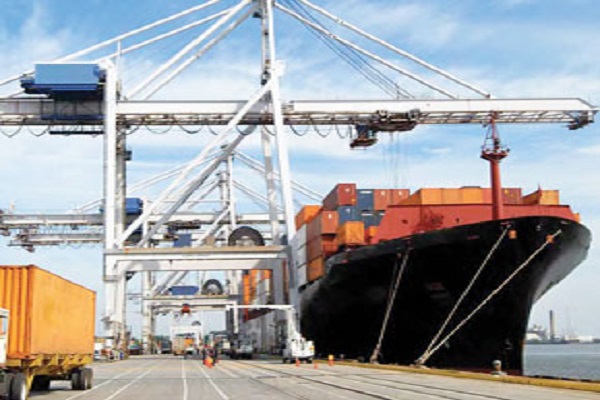
Port operations in India are facing typical issues like tailback of heavy vehicles waiting for cargo handling, delays in permission related to ship movement or anchoring, cumbersome process to complete various paper work, etc. To set things right, the Gujarat Maritime Board (GMB), the nodal agency for port sector development in Gujarat plans to make ample use of ICT at the ports in the State. Nirav Soni of Elets News Network (ENN) writes about the Port Operation Management System (POMS) Project of GMB
The non major ports in Gujarat have been able to attract a considerable share of the maritime freight movement. In fact, in the latest fiscal, the non-major ports have overshadowed their larger counterparts, posting double-digit growth in traffic on the back of better infrastructure and value-added services. The traffic of the non-major ports of Gujarat grew to 336 million tonnes in 2014-15, which is more than 30 per cent of the total national cargo and more than 70 per cent of the cargo collectively achieved by the non-major ports of the country.
Gujarat’s ports have contributed in no small measure to the economic success story of the State. This has been acclaimed by several maritime and economic experts in India and abroad alike. Apart from the strategic location coming to its advantage, the key factor has been the vigorous zeal with which the State and the GMB have encouraged port liberalisation through private investment and modernisation of facilities.

In line with the anticipated expansion of port facilities and traffic growth at Gujarat ports, GMB has identified the key requirements in the near future, one of which is the use of Information and Communication Technology (ICT).Use of ICT in port operations will improve organisational efficiency, enhance stakeholder satisfaction and lower organisational costs. Hence, GMB has envisaged implementation of POMS as part of the Integrated Port Management System (IPMS) project.
POMS: Operational Objectives
|
Once implemented, POMS can act as a single solution to GMB’s information needs emanating from within and outside. POMS will also cater to all business transactions and revenue generation activities happening at all the GMB ports. The deployment of POMS modules will include operation management, e-Business management, Electronic Data Interchange (EDI) and agent management, among others.

POMS will be used by various departments of GMB as well as all the outside stakeholders like importers/exporters, clearing agents, stevedores, banks, etc. The hosted and managed large pool of applications infrastructure of POMS at the Gujarat State Data Center will be first of its kind. It will facilitate easier access, security, adoption, bilingual interactions, transparency and efficiency with ‘One Web’ approach to enable digitalisation of the Indian ports.
Besides, there would be lots of actionable data following POMS implementation for analytics purposes to provide dashboard for management’s insight, like key performance indicators, along with cost centres and profit centres. The Big Data management using business intelligence tools will modernise the traditional paper-based procedures. POMS will also be utilising GIS-based metrics that will be initially 2D/3D surveyed through LIDAR technology. GMB will benefit by using GIS data in port business and prosperity.
Benefits of ICT at Ports
|
Application of ICT
It is essential for a modern port to put in place systems to minimise the burden of paperwork for port users, as delays originating from inefficiency in administrative procedures result in huge losses to shippers and shipping companies due to prolonged stay of ships at ports. It is interesting to note that the European Union has guidelines to promote ports’ investments in electronic data interchange (EDI) systems. These systems are aimed at speeding up administrative paperwork and reducing waiting times for ships and subsequent land transport modes (trucks, railways).
In order to achieve accelerated cargo and container handling, it is important to improve not only infrastructure and equipment, but also the use of ICT. Better usage of ICT in port operations will ensure accurate and timely information on the status of all transactions, vessel activities, cargo operations and marine services.
Integrating ICT with radar and automatic identification systems in vessel traffic management system would enable tracking of vessel movement in a better way and would improve the safety in vessel navigation.
Using these ICT applications, automatic berth plans could be obtained based on parameters like berth depth, vessel draft, cargo type, availability of cranes and vessel arrival time.The notification process linking these entities could also be automated, which would result in improved berth planning and berth utilisation.
mGovernance in POMS
GMB has planned to use mGovernance in the POMS applications for an edge over eGovernance. The application shall be compatible with all the leading browsers available on Java, Android, Symbian, i-OS and Windows platforms- based mobile phones. Some of its features include:
Key Benefits to GMB’s Stakeholders
|
- Help port officers in granting permissions for ship berthing, no-dues certificates
- Facilitate accounts officers in issuing bills (receivables and payables)
- The application shall be inter-operable with other government applications as mentioned in MSDG guidelines
- The solution shall have one-web approach, which means making, as far as possible, the same information and services available to users, irrespective of the device or the browser being used. All government websites should be compatible with mobile devices so as to enable users to access the same information /services as they would, through computers.
The mobile application offered by the OEM shall be compliant with the mobile governance guidelines (framework for mobile governance) issued by the Government of India.
Be a part of Elets Collaborative Initiatives. Join Us for Upcoming Events and explore business opportunities. Like us on Facebook , connect with us on LinkedIn and follow us on Twitter, Instagram.











